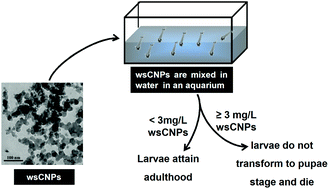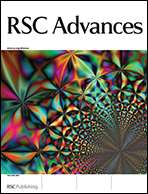Water soluble nanocarbons arrest the growth of mosquitoes
Abstract
Fluorescent water soluble carbon nanoparticles (wsCNPs) formed from the carbonization of wood wool followed by oxidative treatment have been used to image the life cycle of the mosquito. At a concentration of wsCNPs around 0.5 mg L−1, the full life cycle of the mosquito has been successfully imaged. However, at higher concentrations of wsCNPs (3 mg L−1), the growth of the mosquito from the larval stage to adulthood is blocked. Larvae ingesting such high concentrations of wsCNPs did not survive and after four weeks perished. The zebra fish can use such infected larvae as food with no ill effect, suggesting a new method to curb mosquito growth in stagnant pools of water treated with wsCNPs without affecting the ecosystem.


 Please wait while we load your content...
Please wait while we load your content...